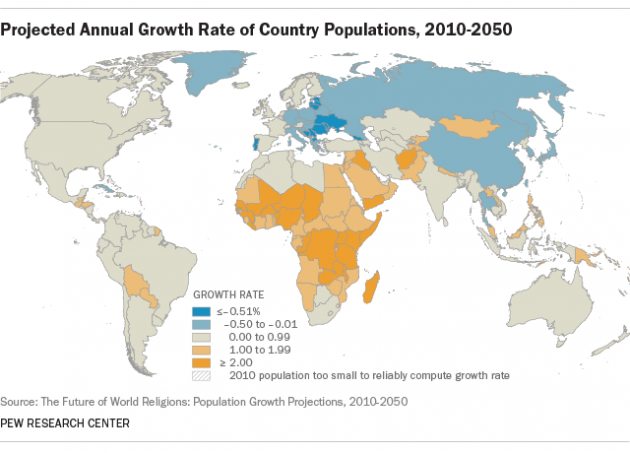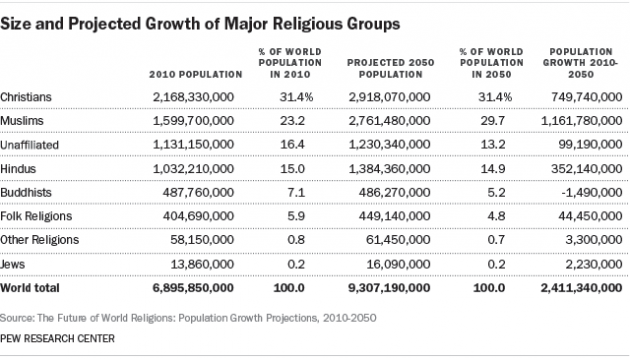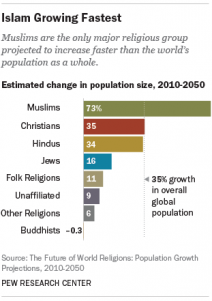Muslims likely to nearly equal Christians in world by 2050, research finds

The religious profile of the world is rapidly changing, driven mainly by differences in fertility rates and the size of youth populations among the world's major religions, as well as by people changing faiths with Muslims likely nearly equal Christians by 2050.
Over the next four decades, Christians will remain the largest religious group, but Islam will grow faster than any other major religion, new research by the U.S.-based Pew Research Center finds.
If current trends continue, by 2050:
● The number of Muslims will nearly equal the number of Christians around the world.
● Atheists, agnostics and other people who do not affiliate with any religion – though increasing in countries such as the United States and France – will make up a declining share of the world's total population.
● The global Buddhist population will be about the same size it was in 2010, while the Hindu and Jewish populations will be larger than they are today.
● In Europe, Muslims will make up 10 per cent of the overall population.
● India will retain a Hindu majority but also will have the largest Muslim population of any country in the world, surpassing Indonesia.
● In the United States, Christians will decline from more than three-quarters of the population in 2010 to two-thirds in 2050, and Judaism will no longer be the largest non-Christian religion. Muslims will be more numerous in the U.S. than people who identify as Jewish on the basis of religion.
● Four out of every 10 Christians in the world will live in sub-Saharan Africa.
These are among the global religious trends highlighted in new demographic projections by the Pew Research Center.
The projections take into account the current size and geographic distribution of the world's major religions, age differences, fertility and mortality rates, international migration and patterns in conversion.
PROJECTED CHANGE IN GLOBAL POPULATION
As of 2010, Christianity was the world's largest religion, with an estimated 2.2 billion adherents, nearly a third (31 per cent) of all the world's 6.9 billion people. Islam was second, with 1.6 billion adherents, or 23 per cent of the global population.
If current demographic trends continue, however, Islam will nearly catch up with Christianity by the middle of the 21st century.
Between 2010 and 2050, the world's total population is expected to rise to 9.3 billion, a 35 per cent increase.

Over that same period, Muslims – a comparatively youthful population with high fertility rates – are projected to increase by 73 per cent. The number of Christians also is projected to rise, but more slowly, at about the same rate (35 per cent) as the global population overall.
As a result, according to the Pew Research projections, by 2050 there will be near parity between Muslims (2.8 billion, or 30 per cent of the population) and Christians (2.9 billion, or 31 per cent), possibly for the first time in history.
With the exception of Buddhists, all of the world's major religious groups are poised for at least some growth in absolute numbers in the coming decades.
The global Buddhist population is expected to be fairly stable because of low fertility rates and aging populations in countries such as China, Thailand and Japan.

Worldwide, the Hindu population is projected to rise by 34 per cent, from a little over 1 billion to nearly 1.4 billion, roughly keeping pace with overall population growth.
Jews, the smallest religious group for which separate projections were made, are expected to grow 16 per cent, from a little less than 14 million in 2010 to 16.1 million worldwide in 2050.